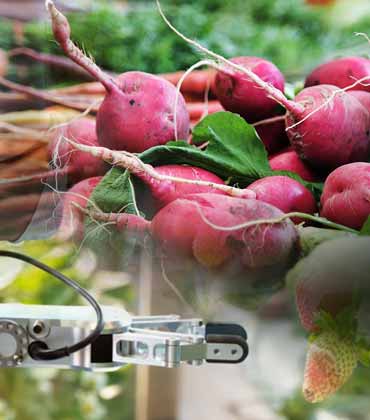THANK YOU FOR SUBSCRIBING
By Keshav Singh, Vice President & Business Head-Dairy, Laxmi Group
Importance of Ingredients in the Manufacture of...
By Uday Garg, Founder & CEO, Mandala Capital
Do AI, IoT, and Big Data in Food and Beverage Sector help...
By Manuel Alcalá, VP Pan American Sales, SMurfit Kappa
Innovation in the Realm of Food and Beverages

No Standard, No Problem - Setting Limits on Processes
Michael Ciepiela, Director of Food Safety and Quality Assurance, Taylor Farms

 Michael Ciepiela, Director of Food Safety and Quality Assurance, Taylor Farms
Michael Ciepiela, Director of Food Safety and Quality Assurance, Taylor FarmsLean Six Sigma should be a key tool used when diagnosing a problem in a process. It encompasses all aspects relative to a leading indicator that can be stated during a project charter, data collected throughout the process, and ensuring any changes made have long term sustainability. But what do we do when there isn’t a problem? Maybe a process can’t determine any issues because there are no critical limits set in place.
Without any kind of standard or lower/upper specification limit set, it is almost impossible to know where the bottleneck in the process might be. Thus, leading to no standard, no problem.
Standards are typically associated with the voice of the customer (VOC). Using methods such as benchmarking will aid a company in understanding what the end product should look like. Each of the steps along the way of production will have associated standards to meet; known as specification limits. In conjunction with spec limits, companies will also set critical limits. These are your ranges of acceptable variations allowed in different steps and final products.
Once there is an understanding of the process flow and the individual steps associated with it, critical limits can be assigned to the various specification standards and statistical process control (SPC) can be performed from start to finish.
Not only does having standards for a process assist in real-time adjustments but it helps identify areas of bottlenecking; leading to continuous improvement. It’s crucial to remember maintaining long term process capability through means of control charts which will in turn produce maximum throughput of a process.
All of these individual aspects of a process combine together ultimately will help in identifying both the leading and lagging indicators. With SPC accompanying this, continuous improvement will occur; all because standards are set.
Read Also














